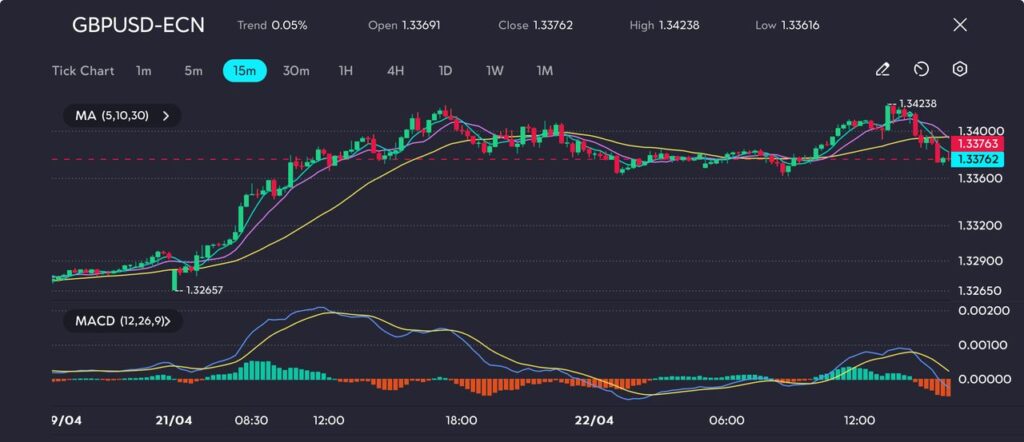
Key Points
- GBP/USD peaks at 1.34238, marking a 7-month high.
- UK headline inflation slows to 2.6%, while services inflation dips to 4.7%.
- Markets price in 86bps of BoE rate cuts, up from 75bps earlier this month.
- US dollar index hits a 3-year low, weighed down by Fed credibility concerns.
The British pound extended gains on Tuesday, breaking above the $1.34 level before settling around 1.3376, as markets digested soft UK inflation data and a tumbling U.S. dollar. The latest CPI figures showed a broader cooling across both headline and services prices, reducing pressure on the Bank of England and prompting a rise in rate cut expectations.
While softer inflation data has tilted rate cut expectations toward 86bps by year-end, the bulk of sterling’s strength was underpinned by a broad dollar selloff, with the USDX falling to its lowest in three years. Market participants continue to react to political pressure on the Federal Reserve, including fresh comments from President Trump attacking Fed Chair Powell’s cautious stance.
Technical Analysis
GBP/USD extended its bullish momentum from the 1.32657 low, climbing steadily to a peak at 1.34238, but signs of exhaustion have begun to surface. Price has since retraced back toward the 1.33660–1.33760 zone, flirting with short-term support near the 30-period moving average.

Picture: Sterling momentum fades near 1.3424 as MACD weakens, as seen on the VT Markets app
The MACD histogram is now crossing below the zero line, and the signal lines have turned downward, suggesting waning bullish momentum. The moving averages (5, 10, 30) show a short-term crossover to the downside, reinforcing the potential for a deeper pullback if support fails to hold.
A decisive break below 1.33660 could open up room toward 1.33200, while bulls would need to reclaim 1.34000 for upside continuation.
With both macro trends and rate path divergence now favouring sterling in the short term, GBP/USD may attempt to retest 1.3450 if dollar weakness persists. However, traders should remain cautious of potential reversals if the BoE signals discomfort with easing bets or if U.S. data surprises to the upside.









